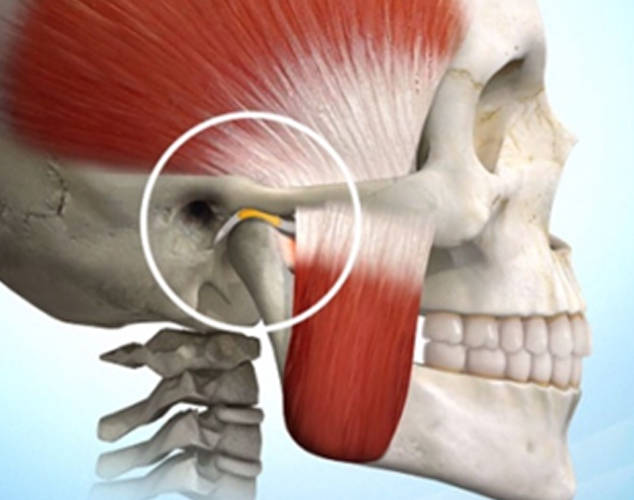The most persistently used joint in the body, the temporomandibular joint (TMJ), is responsible for the movement of the lower jaw (mandible). Without this joint, which connects the lower jaw with the skull, we would not be able to open our mouths to eat, chew, breathe, or talk.
What is TMD?
TMD (Temporomandibular Joint Disorder) is characterized by pain and aching in the jaw, persistent clicking, limited range of motion and sometimes headaches or earaches. TMJ disorders may be mild to severe, short or long term.
Causes of TMJ Disorders:
Bruxism (grinding):
Often, people grind or clench their teeth at night while they are sleeping. This involuntary activity puts an enormous amount of pressure on the joint, creating inflammation.
Displacement or dislocation of the disk:
There is a disk in between the jawbone and the socket that can become displaced, dislocated or damaged, causing damage and pain.
Trauma:
An injury to any part of the jaw can cause pain in the joint.
Stress:
Painful spasms and trouble moving the jaw are sometimes the result of stress.
Minimally Invasive TMJ Treatment
- Treatment that avoids surgery or other invasive procedures and focuses on non-surgical management of symptoms.
- Night Guards and Splints
- Physical Therapy
- Home Care
- Soft Foods
- Anti-inflammatory medications
- Stress Management
- Relaxation Technique
Surgical Treatment
Surgery is often required for TMJ disorders that have not responded to non-surgical treatments.
Avoiding “open” joint surgery unless absolutely indicated
Incisions and surgery within the TMJ have risks and can lead to scarring that is best avoided if possible.
Arthrocentesis and Arthroscopy
Surgical procedures avoiding incisions and utilizing only 1-3 needle punctures around your TMJ to irrigate the site, remove harmful inflammation, and improve scarring that may be present.
Modified Condylotomy
A larger surgical procedure that allows the part of the jaw that is within the TMJ to “relocate” to the correct position without opening the TMJ or making facial incisions.
This procedure is performed in a hospital setting and requires at least 1 week off from work/school.
Open TMJ Surgery
Used as a last resort, Open TMJ surgery provides the benefit of direct visualization of the TMJ but is preferred as a last resort .
Orthognathic surgery Abu Dhabi | Jaw surgery UAE

